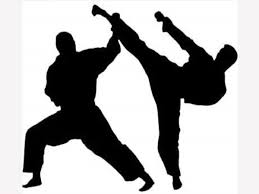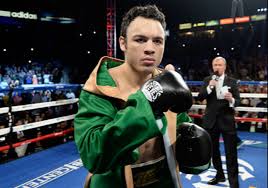PREPARATION OF KARATISTS
 The three main components in karate training are kihon, kata and kumite.
The three main components in karate training are kihon, kata and kumite.
KIHON
– development of basic karate techniques by the method of repeated repetitions.
Kata
– Complexes of complexly coordinated movements imitating karate techniques. Movements in kata are performed one after another in a strictly defined sequence. Each karate style has its own kata sets. In addition, kata with the same name in different styles can vary significantly. Kata is often called shadow boxing.
KUMITE
– work with a partner, sparring. During kumite, skills for conducting a real fight are developed.
Gymnastic exercises aimed at the development of muscles and tendons are important in the training process of a karate. To increase the punching ability of the blow, suspended sandbags and makiwara (a small, tightly woven bundle of straw attached to an elastic board) are used, and boxes with dry beans, small pebbles or sand are used to train and strengthen straightened fingers.
The room for karate classes – the “dojo” (literally: the place where the paths follow) – has a simple, not carpeted wooden floor. Students train without shoes. The traditional karate costume (“karate-gi”) is a spacious jacket and pants, usually made of white fabric, as well as a long belt of cotton fabric. The color of the belt determines the level of karate training. Beginners wear white belts. Colored belts are successive steps (“kyu”) to the black belt – the hallmark of a truly skilled fighter. In turn, black belts are also subdivided into various degrees (“given”) depending on the skill level of the karate. Most karate schools are limited in teaching their students the level of the black belt of the eighth dan.
COMPETITION.
Karate competitions are held in two independent tests: kata and kumite.
In kata competitions, an athlete performs one or another kata, and judges give marks for the quality of performance. Kumite competitions are sports fights that are held according to certain rules. The rules of the competition are determined by the organization within which this tournament takes place. Men and women compete separately in both kata and kumite.
KARATE IN RUSSIA.
Until 1978, karate in the USSR existed in the form of amateur sections and clubs, most often founded by people who had been abroad and trained there for this kind of martial arts. Karate classes in the USSR became very popular by this time. To take control of the situation, on November 13, 1978, the USSR Sports Committee created a commission for the development of karate. In December 1978, the USSR Karate Federation was created. In 1981, the Council of Ministers of the USSR adopted the decree “On measures to streamline the work of karate sections.” In the same year, the Presidium of the Supreme Council of the RSFSR issued Decree No. 6-19 “On Administrative Responsibility for Violation of Karate Training Rules” and Decree No. 6-24 “On Amendments to the Criminal Code of the RSFSR”. The Criminal Code was supplemented by article 219/1 on liability for “illegal karate training”. On May 17, 1984, the Sports Committee issued Order No. 404, “On the Prohibition of Karate Education in Sports Societies.” Thus, from 1984 to 1989, karate in the USSR was officially banned, but clandestine sections and clubs continued to operate. On December 18, 1989, the State Sports Committee of the USSR adopted Decree No. 9/3 “On the Development of Martial Arts in the USSR”. According to this decree, order No. 404 of May 17, 1984 was declared null and void. Currently, karate in Russia is represented by a wide range of styles and federations that actively collaborate with international karate organizations.




